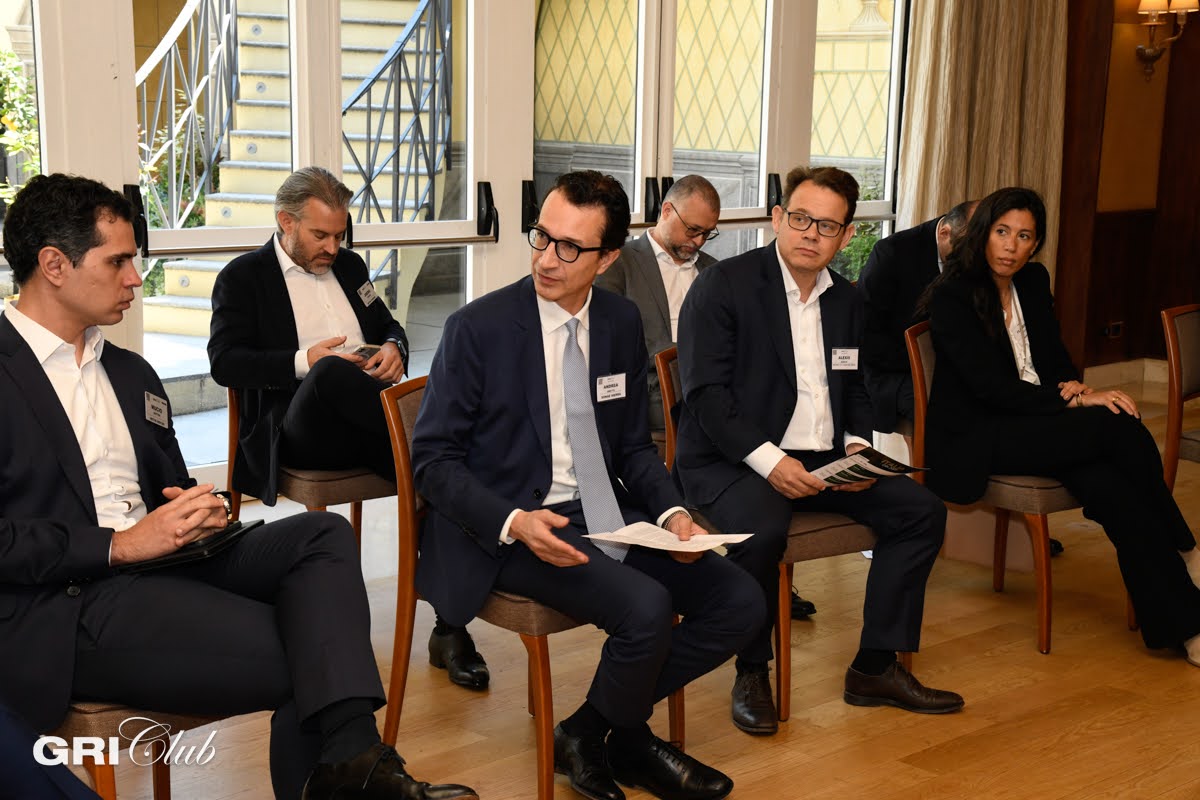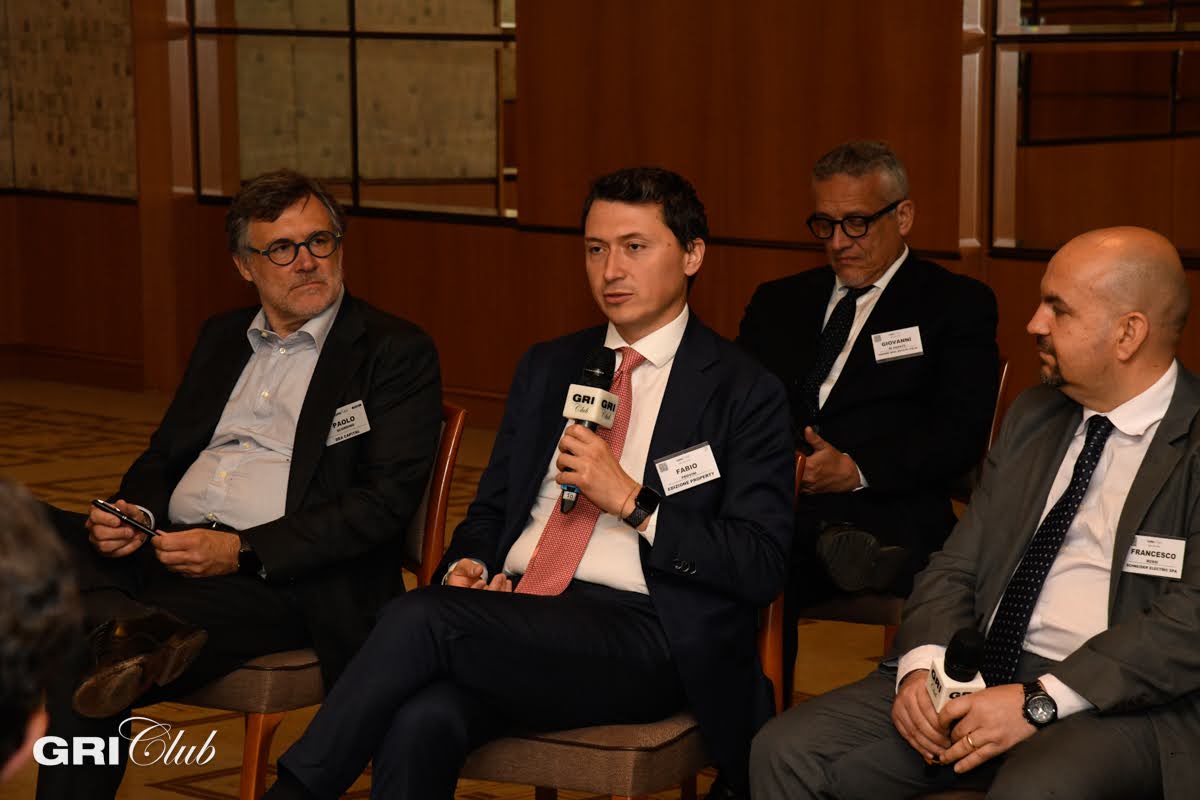 Credit: GRI Club
Credit: GRI Club Student Housing & other investment strategies in Italy
July 6, 2023Real Estate
Written by Sarah Garnett
Key Takeaways
In the current market environment, finding reasons to invest in Core and Core Plus asset classes might be challenging due to the low-interest rate environment. The main problem is the expected return, which is causing investors to ‘wait and see’. However, there is potential in asset classes such as Student Housing and Life Sciences that could be interesting for investors, who are exploring these opportunities in countries like Ireland, Portugal, and Italy, where these asset classes are less common. (Photo: GRI Club)
(Photo: GRI Club)In the current economic environment, investors are looking for assets with space for value-add, development, and repositioning. Logistics is one of the best asset classes for investors seeking value and finding opportunities, primarily due to the spread margins available. As a Core investor, however, it is necessary to consider asset classes that are in line with economic challenges, rather than the fashionable ones.
Milan is emerging as a significant player in the Office space arena, while Luxury Residential properties in Milan and secondary cities offer excellent investment opportunities. Residential assets in Italy are shifting towards providing more services and digitalization, while different asset classes such as Hotels and Data Centers offer various investment options. Asset size and fund structuring determine investment strategy.
Many attendees noted that In Italy, there are key issues with development and bureaucracy, with some waiting multiple years for planning permission for projects. Strong relationships with public administrations are necessary to gain this approval, as certainty on delivery times is key for many investors. Some local bodies in Italy do not seem to prioritize time when it comes to negotiations. This has been a recurring issue for many, and the lack of urgency and efficiency in some cities can deter investor decisions.

(Photo: GRI Club)
There is a huge gap in secondary cities in Italy, attracting investors' attention and creating opportunities. The pandemic has changed the way people work, and more individuals are embracing smart working, reducing their interest in commuting to big cities like Milan daily. Smaller office hubs and secondary offices in secondary locations can provide a solution to the challenge of commuting to work while avoiding working from home.
Many investors are considering cities outside of Milan which have good catchment areas, good populations and are still experiencing GDP growth. A contributing factor to this is also that Milan's residential market's high prices limit its accessibility. Padua, Lucca, and Vicenza, among other cities, are considered interesting opportunities.
However, Milan has become the best hub for investment in Italy due to its connectivity with the rest of Europe. It is difficult to connect with other sides of Europe when investing in secondary locations or moving to the south of Italy.
Investing in Milan is also easier because of the availability of data, making it simpler to understand and show investors how easy it is to progress in this area. Liquidity for certain asset classes outside Milan and a bit of Rome is also limited, making these cities the primary destinations for investment.
One of the main challenges also highlighted by attendees was the cooperation, or lack thereof, of Italy’s public administration when developing new projects. This is becoming increasingly complex making it difficult for developers and investors to deliver projects timely. Entitlement processes are long, and there are problems with decontamination. In this context, it can be difficult to get certainty on the delivery table, and may prevent investors from getting involved in some projects.
Read: Italy’s Recovery Plan - Real Estate’s Boom?
Office Spaces in Milan
Milan's office space market has been in a state of flux in recent years. Despite high demand for offices and office spaces, there is a shortage of options available, which is leading many to consider different ways of looking at the market.An interesting aspect of the market is the shift in focus towards the city centre. In the past, developers showed little interest in developing offices in the city centre, as residential and hospitality properties dominated the area. However, this has changed in recent times, and this area is now emerging as a significant player in the Office space arena.

(Photo: GRI Club)
Investing in core-plus assets, such as prime office space in the centre of Milan, is an interesting opportunity for investors due to the high demand and low availability of these spaces in the city. The rental growth in these assets also continues to attract investors, despite uncertainties surrounding the trend of remote work - international investors are less certain about this choice, particularly from countries that are seeing high levels of remote work, such as the USA.
A recent trend is a growing interest in repositioning existing buildings for various uses, including Offices, Residential spaces, and Retail. Some opportunistic investors are looking for buildings in prime locations, and while the demand for offices remains high, there is also potential for the conversion of existing buildings to residential spaces. With a delay of almost 30 years in development, the city is facing a shortage of options, and the market momentum will have to be taken into account as we head into the post-COVID world.
Residential Properties
Milan is experiencing a surge in demand for luxury residential properties, particularly from foreign buyers who are interested in saving money for fiscal reasons. Investing in these properties presents an excellent opportunity for opportunistic investors who can find city centre locations with high demand. However, finding the right property and understanding the market requires significant knowledge and expertise in the residential property sector.Milan’s luxury residential market presents excellent opportunities for investors interested in capitalizing on the demand from foreign buyers. However, successful investing in this is not for the faint-hearted and requires significant experience and knowledge of the market. Therefore, it is essential to choose the right investment and to understand the investment risks involved before making a purchase decision.
ESG is also an emerging focus for many investors, so those involved in new projects need to explain how it is impacted by ESG and attract investors through the scheme. It is essential that the regulation is reached, especially for old residential investments. Compliance with regulation is not a question, and if the level is not reached by a specific year, the investment becomes a no-go.
Read: Italy’s public debt and the impact on real estate
 (Photo: GRI Club)
(Photo: GRI Club)Hotels and Leisure
Investing in hospitality in Italy is a great business opportunity with a significant percentage growth in tourism. Italy's hotel and leisure industry is a sector that has yet to be institutionalized, creating an opportunity for investors to add value. This is an interesting asset class because there is still room for growth. While there are issues with obtaining permits and licenses in Italy, investing in this sector can provide high returns in the long run.Investors are looking for opportunities to invest in hospitality. The problem is that there is no institutional product to invest in. Until 2019, it was too expensive for investors to invest in 5-star hotels, so they invested in Hostels instead. To make an institutional market of the asset class, which is under-supplied and under-covered, an organization that will collect all these properties and institutionalize them with brands and a white label is necessary.
Retail
Retail real estate has been overlooked in the past few years, but according to these industry experts, it could be a great investment opportunity for equity investors. The pandemic has also shown that the fundamentals of retail real estate are still good and have shown resilience with sales going well and traffic coming back almost to 2019 levels. While retail real estate yields are currently higher than what they should be, it's expected to change soon since these yields are becoming more attractive.The retail market has transformed into a specialist market in recent times. Newcomers are finding it difficult to enter the market due to the complexity of the retail market. Understanding the needs of retailers, physical and structural issues, and how everything comes together are the key aspects, while investors who only focus on the yields are not likely to succeed in the long term. Each property has its own unique set of challenges and opportunities, and understanding those is the key to success in the retail market.
However, it's important to note that the Italian market or retail market in Europe is different than in the US and it's important to explain this to American investors. Any equity investor interested in retail real estate should start working now because as attendees say, the game is changing. Retail real estate allows investors to be creative in terms of de-risking, while there are a lot of grey areas that go beyond traditional retail, which can be a good investment.
Alternative Assets
Data CentersData Centres are an attractive asset class for investors in the Italian real estate market. This type of investment is in high demand and can provide higher returns with fewer problems on a local and legal level. There is also no direct pollution associated with Data Centres, which makes them a favourable investment. Municipalities are seeing this as a great opportunity for employment, which makes it even more attractive.
A strategic position is held by Italy, and in particular Milan, for the supply of content due to submarine cables connected to Genova and geographical links to other European countries. The main hyperscale operators have therefore targeted these areas as strategic cloud regions in Southern Europe.
Read: The best investing choices in Italian Real Estate, for new players in the market
Student Housing
Student housing is the primary asset class for Italian investment in real estate. Compared to other cities, Milan is a city where there is still room for growth in the living sector. Although it may be considered tier 2, the market is expected to grow with other cities in Europe, further expanding the opportunities for investment.
Institutional investors are already showing interest in prime properties. This sector is also promising if government resources can be pooled with private investment.
The student housing industry has experienced a different repricing compared to other asset classes. Cap rates of student housing in London have dropped 50-75 basis points making it an ideal opportunity for investment. Italy's real estate market doesn't have much competition, so prime product revenues will likely move out, but not as much as other markets.
Student accommodation, residential, and logistics sectors are part of the strategic long-term investment plan. At present, the company is looking for a repricing of 20-25% discount compared to the previous estimated value. The Italian market has been untouched by institutional investors, making it a unique opportunity.

(Photo: GRI Club)
When it comes to investment strategy, the size of the asset is a key factor. If the asset is small, it can be sold on the market to private investors. Anything under 2,000 square meters falls into this category. However, if the asset is above 2,500 square meters, it should be put in a fund with other assets and sold to institutional investors. This allows the selling of assets all at once, which is more convenient.
GRI Club Italy will meet again at Europe GRI 2023.